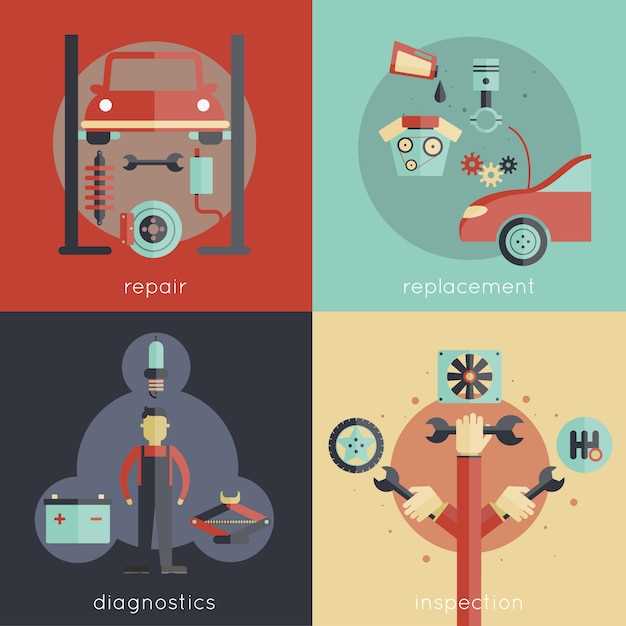

Brakes are one of the most critical components of vehicle safety, and understanding the key indicators of brake failure is essential for every driver. The ability to maintain control over a vehicle hinges on the reliability of its braking system. Ignoring signs of potential failure can lead to a loss of control during critical moments, increasing the risk of accidents.
One of the primary warning signs of brake issues is unusual noises, such as grinding or squealing. These sounds often indicate that the brake pads are worn or that there is a problem with the brake rotor. Early detection of these noises can prevent further damage and ensure that drivers retain control over their vehicle.
Another indicator to watch for is a change in the brake pedal’s behavior. If the pedal feels soft or spongy, or if it sinks to the floor without much resistance, it may suggest a loss of hydraulic pressure or fluid leaks. Addressing these concerns promptly is crucial to maintaining effective braking performance and avoiding dangerous situations on the road.
Unusual Sounds Indicating Brake Malfunction

Unusual sounds when applying the brakes can serve as a crucial warning sign of potential brake failure. Listening for these sounds is vital to maintaining control over your vehicle and ensuring your safety on the road.
One of the most common sounds is a squeaking or squealing noise. This often indicates that the brake pads are worn down and may be losing their effectiveness. If this sound persists, it could lead to a significant loss of braking power, putting you at risk of an accident.
A grinding noise usually signifies that the brake pads are completely worn out and the metal backing is contacting the rotor. This sound is a serious warning; it not only reduces braking efficiency but can also cause considerable damage to other braking components, leading to costly repairs and a dangerous loss of control.
Another sound to watch for is a thumping or pulsating noise when braking. This can indicate that the brake rotors are warped or unevenly worn. Such issues can compromise the effectiveness of the brake system and could result in a loss of stopping power.
Finally, a hissing or humming noise might suggest a brake fluid leak, which can lead to a reduction in hydraulic pressure. This situation can critically diminish your ability to control the vehicle, emphasizing the need for immediate attention.
Remaining vigilant and addressing these unusual sounds promptly can help avoid severe brake failures and maintain safe driving conditions.
Visual Signs of Brake Wear and Damage

Identifying the visual signs of brake wear and damage is crucial for maintaining control over your vehicle and ensuring safety on the road. Frequent inspections can help you detect early warning signs before they lead to a loss of braking efficiency.
One of the most noticeable indicators of brake wear is the appearance of cracks or grooves on the brake pads or rotors. These defects can occur due to overheating or prolonged use, compromising braking performance and leading to potential failure. If you observe such damages, it is advisable to replace the affected components promptly.
Discoloration of the brake pads or rotors is another significant warning sign. Overheated brakes often exhibit a bluish tint, which indicates that the material has been subjected to excessive heat. This can lead to loss of friction and should be addressed to maintain reliable braking control.
Additionally, uneven wear on brake pads suggests that there is an underlying issue with the braking system. If one pad is significantly thinner than the others, it may lead to reduced stopping power and increase the risk of brake failure. Regular checks can help catch these issues early and prevent further damage.
Lastly, the presence of leakage around brake components, such as the master cylinder or brake lines, is a clear warning sign of potential hydraulic failure. Brake fluid loss can severely affect braking ability, making timely inspection essential to ensure that all parts are functioning correctly.
By monitoring these visual signs of wear and damage, drivers can take proactive measures to maintain their brakes, enhance safety, and avoid the serious consequences of brake failure.
Behavioral Changes in Vehicle Handling During Braking
When a driver applies the brakes, numerous behavioral changes occur in the handling of the vehicle. These changes can serve as critical indicators of potential brake failure. One noticeable effect is the alteration in steering control. If the vehicle pulls to one side during braking, this may indicate uneven brake pad wear or an issue with the brake system itself. Drivers should remain vigilant for this warning sign, as it can compromise overall safety.
Another significant factor is the response of the brake pedal. A spongy or soft pedal feel when engaging the brake can signal air in the brake lines or low fluid levels. This lack of firmness indicates a potential failure in maintaining control during braking, making the vehicle more difficult to stop effectively.
In addition, strange noises frequently occur when brakes are engaged. Squealing, grinding, or clicking sounds can serve as a warning that something is amiss with the brake components. Such noises often arise from worn brake pads or damaged rotors and should be addressed immediately to prevent further mechanical issues.
Furthermore, longer stopping distances can indicate brake performance decline. If a vehicle takes significantly more time to come to a stop than usual, it could be a sign that the braking system is failing. Drivers should monitor this change in behavior closely, as it can dramatically affect control and safety on the road.
Lastly, vibrations felt in the brake pedal or steering wheel during braking can suggest rotor warping or misalignment. This disturbance not only diminishes braking efficiency but also affects the driver’s ability to maintain control, increasing the risk of accidents.
Overall, recognizing these behavioral changes in vehicle handling during braking is essential for maintaining safety and ensuring the vehicle operates effectively. Regular maintenance and attention to these warning signs can reduce the risk of brake failure and enhance the driving experience.







